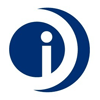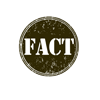Price Will Determine Success of Wearables" "

First smartphones now wearable devices, enterprises can never really escape evolving technology.
In order to stay ahead of the curve, it's important that brands understand how consumers are using certain technology in order to decide if they want to enter the game.
A new report from First Insight looked into which soon-to-be released wearable devices will become tech fads and which will fade out.
Some of the key findings include that fitness wearables were most likely to have sales success, in part because of their lower pricing. In addition, women, on average, were more willing to pay for wearables than men, and prefer small wearables versus larger, "cluckier" watches.
Despite wearables not having reached mass market status yet, many fitness wearables, in particular, tested the best in the Midwest. Regardless of location, on average, the wearable testing group's expected retail prices are 41 percent higher than what consumers are willing to pay, which is why fitness wearables scored highest in overall value - at $74-$125. The research goes to show retailers that price continues to be a determining factor in a product's success rate.
"It's a bit counterintuitive that value is a more critical factor than design, and price is a major component of the value of a product," says First Insight CMO Jim Shea. "Designers tend to think more about making something people will love instead of thinking about the price, but the value quotient -- the combination of price and features -- is a better predictor of whether or not a product will sell."

Subscribe to Our Newsletter!
Latest in Marketing








